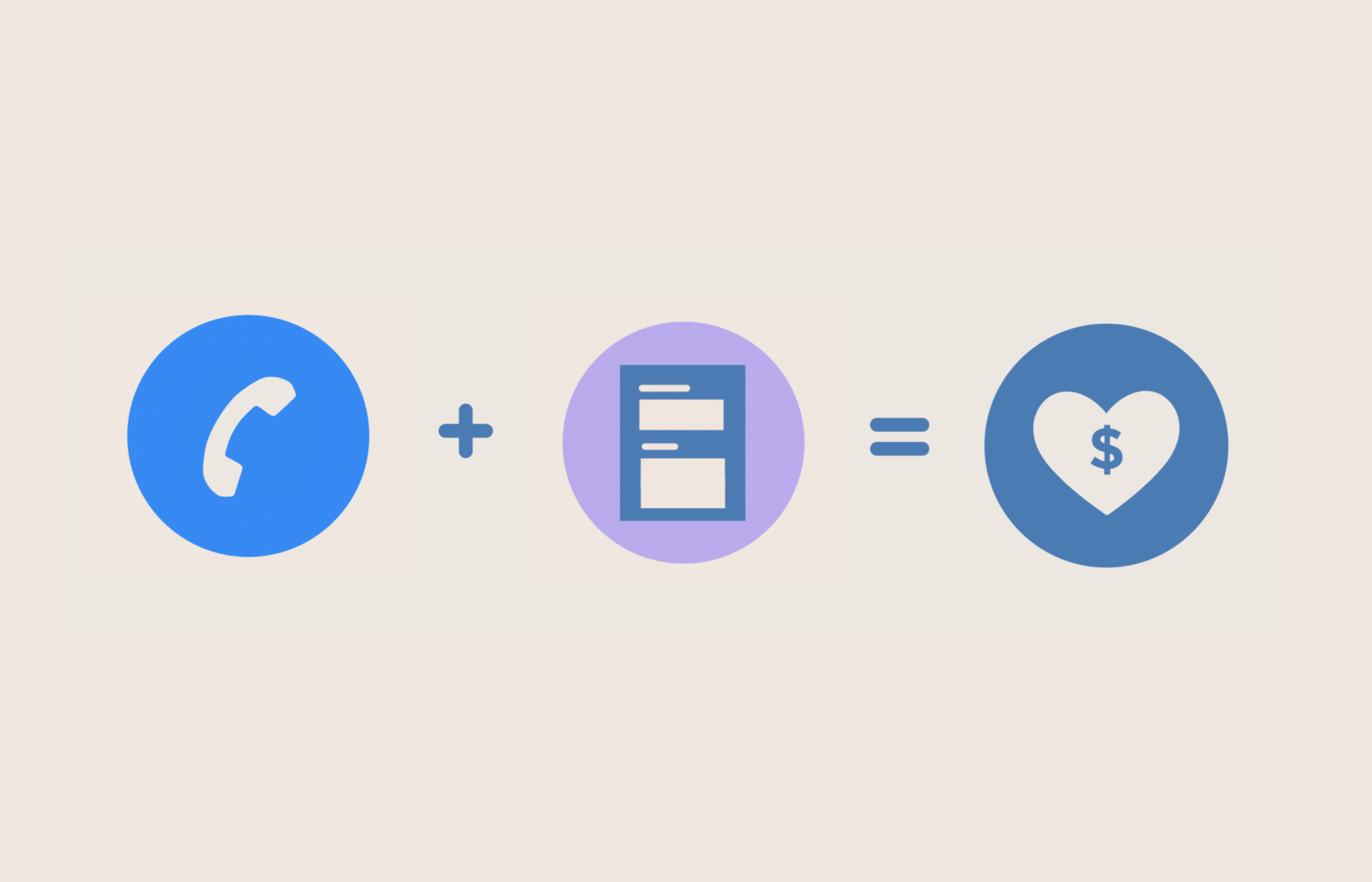With third-party cookies going away and customers hesitant to share their personal information, marketers need to be especially smart about finding ways to collect insights into campaigns and their customers’ journeys. While 95% of agencies agree that lead conversion tracking is important or very important, marketers often struggle with finding the best way to track marketing performance.
Fortunately, marketers have some powerful tools at their disposal. Tracking tools, for instance, help businesses see which marketing sources are driving the best inbound leads. With that data in hand, you can more easily optimize campaigns to create more opportunities. Even better, some tools become more valuable when they’re used together. Call Tracking and Form Tracking by CallRail, in particular, can work together to increase ROI for your marketing efforts.
How Call Tracking and Form Tracking work
Call Tracking lets you see where customers found your business and what campaign prompted them to call or text. Similarly, Form Tracking tracks form submissions on your landing pages and other web pages. This lets you see how leads engaged with your business before completing a form, how they found your form, and what actions they took after submitting it.
“CallRail is undoubtedly one of the easier-to-use call tracking systems on the market. It can be deployed very quickly with either a simple line of code or through a plugin on WordPress. I would recommend CallRail to anyone who needs a quick and easy-to-use call tracking system.” – Eoin H, photographer.
Both Call Tracking and Form Tracking are easily installed via a single line of JavaScript code on a website. This tracking code collects data and shares it with your CallRail account. According to one small business owner, CallRail’s Form Tracking makes it easy to show clients ROI and lead counts for all forms.
“I manage Google Ads and the tracking and attribution is better than Google Ads’ own reporting. … Many times, my clients’ own lead tracking systems are broken and I can always point back to CallRail to show attribution.” – Brent S., small business owner
In addition to giving you insights into lead sources, page visits, keyword searches, and ad interactions, both Call Tracking and Form Tracking integrate with many of your current platforms to let you apply the data to current marketing efforts. CallRail integrates with your CRM, bid management, data visualization, website optimization, and online advertising applications.
Why Call Tracking and Form Tracking are better together
Why use both Call Tracking and Form Tracking? Like any dynamic duo, they’re powerful on their own but even better together. When paired, Call Tracking and Form Tracking give you a comprehensive view of call and form conversions.
The metrics you collect in Call Tracking and Form Tracking can then be pulled into the CallRail platform for further analysis. The combination of inbound call tracking and form submission tracking allows you to see a full view of which ads and offers customers respond to and leads engage with. With this information you can re-allocate your marketing budget accordingly. From there, you should also be able to reduce your cost per lead and improve ROI.
By incorporating Form Tracking into her marketing attribution toolbox, Lea Anne Roberts, Director of Marketing & Call Centers at Reliable Heating & Air, has seen her cost per lead go down firsthand. When she wanted to try a new search engine marketing strategy, she used Form Tracking to test the performance of her new strategy. Not only did she find that it delivered positive results that lowered the cost per lead, but she was then able to use the results to persuade others in the company to change strategies.
Gain better understanding of customer engagement
By pairing Call Tracking and Form Tracking together, you can see the entire customer journey, from first touch to conversion—and the path in between. Since a customer journey is rarely a straight line, it’s valuable to see all the places a lead reaches out to your business. Form Tracking lets you see when someone contacted your company through various avenues at different times—a capability that’s not included in other common tools. And you can use both tracking tools to segment and qualify leads from calls and forms.
Both Call Tracking and Form Tracking also identify the specific keywords, sources, and campaigns driving calls and form submissions. So, when you track both calls and forms, you can better see which contact channels are sending the most qualified leads. Then, you can adapt your tactics accordingly.
Additionally, by using both a call tracking number and a form tracking link, you give prospects options about how to contact your business. It’s smart to make your company easy to contact and do business with, and many people have a preference when it comes to calling, texting, or contacting businesses through their websites. To make online tracking easy, CallRail’s Form Tracking integrates with popular form builders like Wordpress and HubSpot.
Equip your toolbox with the perfect pairing of lead solutions
Call Tracking is valuable for inbound calls, but with that alone, you don’t know what you’re missing when it comes to online engagements. By using Form Tracking and Call Tracking together, you can see:
- The full marketing funnel
- The engagement timeline for every contact
- Multi-touch attribution reports automatically
- What prompted calls and form submissions
- The quality of incoming leads
- Cost per lead
All of this data lets you help you spend your marketing dollars more efficiently, improve ROI, and increase sales. To see how Call Tracking and Form Tracking are better together, sign up now.
Call Tracking and Form Tracking are Better Together Learn more about Form Tracking and sign up for a free trial today.










